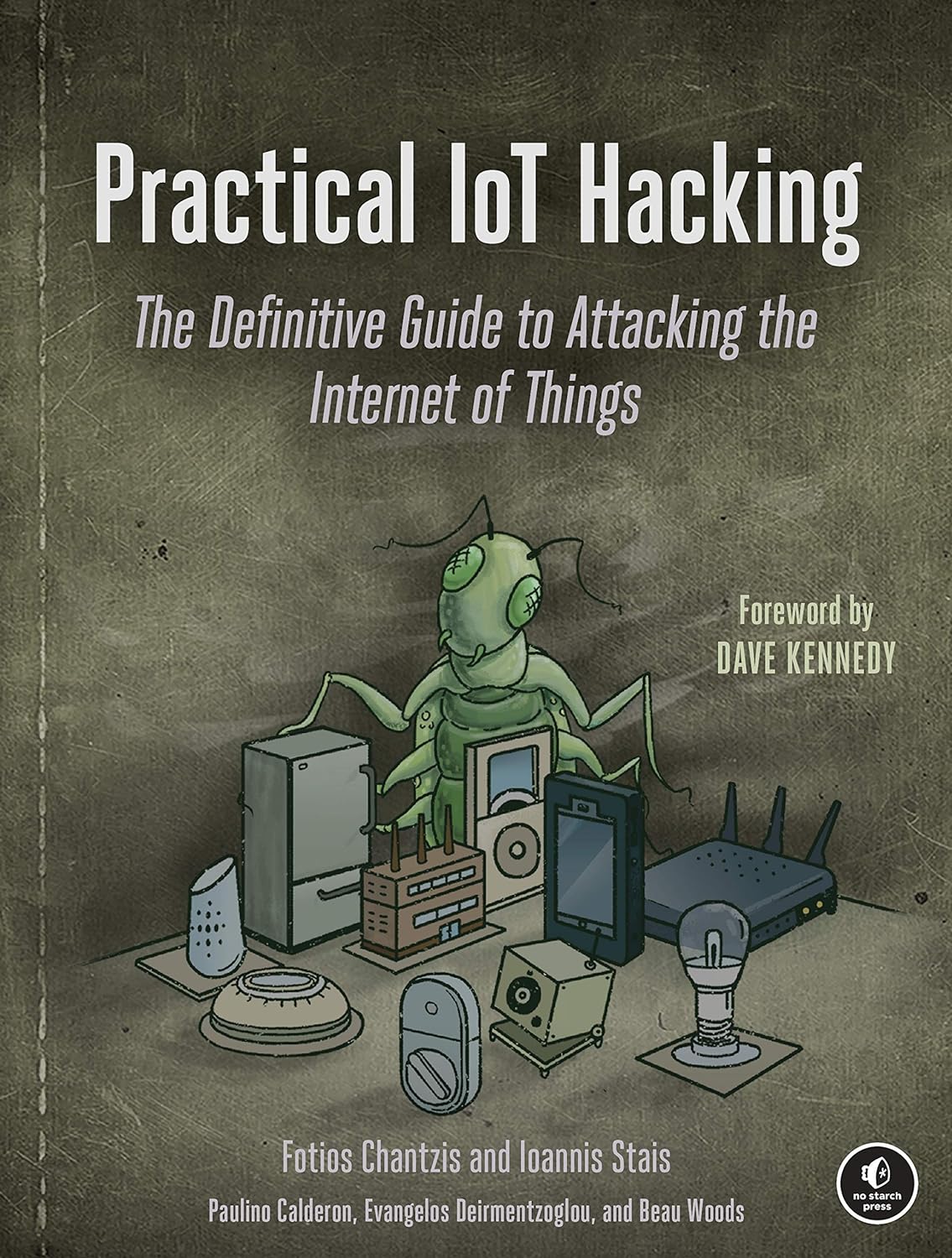Dive into DNS: Security Exploration with DNSenum and DNSmap
Leveraging DNS enumeration tools for comprehensive security reconnaissance.

Unraveling the DNS Landscape
In the intricate domain of cybersecurity, understanding the foundation upon which digital communications are built is crucial. At the heart of this foundation lies the Domain Name System (DNS), a critical component of the internet’s infrastructure that translates human-friendly domain names into IP addresses that computers use to communicate. This transformation underscores the significance of DNS enumeration, a reconnaissance technique that probes into DNS to reveal invaluable insights about an organization’s network infrastructure and potential vulnerabilities lurking within.
DNSenum and DNSmap emerge as quintessential tools in the arsenal of cybersecurity professionals, each designed to uncover a wealth of information from DNS data. DNSenum excels in extracting detailed information about domains, such as subdomains, mail exchanges (MX records), and name servers (NS records), which are pivotal in mapping out an organization’s network landscape. Conversely, DNSmap specializes in brute-forcing subdomains, offering a unique angle to discover hidden or forgotten DNS entries that could be gateways for attackers.
This article aims to navigate the depths of DNS enumeration with DNSenum and DNSmap, shedding light on their capabilities, and demonstrating how these tools can significantly augment security reconnaissance efforts. By delving into practical use cases, setup guidelines, and optimization tips, we endeavor to equip readers with the knowledge to leverage these tools for comprehensive security assessments. In doing so, we underscore the pivotal role of DNS enumeration in fortifying cybersecurity defenses, making it an indispensable skill in the toolkit of bug bounty hunters and security researchers alike.
Getting to Know DNSenum and DNSmap: Unveiling DNS Reconnaissance Allies
In the realm of cybersecurity reconnaissance, DNSenum and DNSmap stand out as pivotal tools. Each offers distinct approaches and functionalities tailored to DNS enumeration. As cybersecurity professionals seek to uncover the digital footprint of target domains, understanding the nuances and capabilities of these tools becomes essential.
DNSenum, as its name suggests, is a robust enumeration tool designed to extract and aggregate a wide array of DNS information. It’s particularly adept at identifying subdomains, mail exchanges (MX records), and name servers (NS records), providing a comprehensive view of a target’s DNS infrastructure. Beyond basic enumeration, DNSenum can integrate with third-party services like Google and Bing for subdomain discovery and query WHOIS databases to extract domain ownership information. This multifaceted approach makes DNSenum an invaluable tool for painting a detailed picture of a target’s DNS landscape, offering insights into potential attack vectors and security vulnerabilities.
DNSmap, on the other hand, shines with its brute-force approach to uncovering subdomains. While it might seem straightforward, DNSmap’s power lies in its simplicity and efficiency. It systematically attempts to resolve a pre-defined list of subdomains against a target domain, identifying the easily discoverable ones and unearthing forgotten or hidden subdomains that could be ripe for exploitation. This brute-force capability is particularly useful for finding development, staging, or otherwise unpublicized subdomains that could expose sensitive information or vulnerabilities.
When to Use Each Tool:
- DNSenum is the go-to when you need a broad and detailed enumeration of a target’s DNS information. Its ability to pull records from various sources and its integration with WHOIS databases make it ideal for initial reconnaissance phases where gathering as much information as possible is key.
- DNSmap is best utilized when you suspect there may be more to a domain than meets the eye. Its brute-force approach is tailored for digging deeper into the DNS structure to find hidden or neglected subdomains that could be security liabilities.
Combining Forces for Comprehensive Reconnaissance: Utilizing DNSenum and DNSmap in tandem offers a formidable approach to DNS reconnaissance. Begin with DNSenum to establish a foundational understanding of the target’s DNS infrastructure, then deploy DNSmap to further probe for subdomains that may have evaded initial discovery. This layered strategy ensures a thorough exploration of the DNS landscape, revealing vulnerabilities and providing a deeper insight into potential security threats.
By understanding the features, differences, and strategic applications of DNSenum and DNSmap, cybersecurity professionals can enhance their reconnaissance efforts. They can leverage these tools to uncover crucial information that strengthens security assessments and bolsters defenses against potential cyber threats.
Installing and Configuring DNSenum and DNSmap: Setting the Stage for DNS Reconnaissance
Mastering the art of DNS enumeration begins with the proper setup and configuration of DNSenum and DNSmap. These tools, each with its unique strengths, are instrumental in unveiling the intricate web of DNS information. This section provides a comprehensive guide to installing and fine-tuning DNSenum and DNSmap, ensuring you’re equipped to embark on your DNS reconnaissance journey.
DNSenum Installation: DNSenum is written in Perl, making it compatible across various operating systems. However, it relies on several Perl modules and third-party tools to function optimally.
- On Linux (Debian-based systems):
- Update your system:
sudo apt-get update - Install Perl and necessary modules:
sudo apt-get install perl libnet-ip-perl libxml-libxml-perl libnet-dns-perl libnet-netmask-perl - Clone the DNSenum tool from its GitHub repository:
git clone https://github.com/fwaeytens/dnsenum.git - Navigate to the dnsenum directory and run the tool:
perl dnsenum.pl
- Update your system:
- On macOS:
- Ensure Homebrew is installed, then use it to install Perl:
brew install perl - Install necessary Perl modules using CPAN:
sudo cpan install Net::IP XML::LibXML Net::DNS Net::Netmask - Follow the Linux instructions for cloning and running DNSenum.
- Ensure Homebrew is installed, then use it to install Perl:
DNSmap Installation: DNSmap is also designed to run on various operating systems, offering a straightforward installation process.
- On Linux:
- Most Linux distributions include DNSmap in their repositories. Install it using:
sudo apt-get install dnsmap - Alternatively, download the latest version from its GitHub repository:
git clone https://github.com/makefu/dnsmap.git - Compile from source if necessary and run
dnsmap.
- Most Linux distributions include DNSmap in their repositories. Install it using:
- On macOS:
- Utilize Homebrew to install DNSmap:
brew install dnsmap - If DNSmap is unavailable via Homebrew, follow the Linux instructions for manual installation.
- Utilize Homebrew to install DNSmap:
Configuring for Optimal Performance:
- DNSenum Configuration Tips:
- Customize your wordlist for subdomain brute-forcing. DNSenum allows you to specify your wordlist file, enhancing the effectiveness of the enumeration process.
- Make use of DNSenum’s ability to query different DNS servers by specifying the server with the
-nsflag, potentially uncovering more information.
- DNSmap Configuration Tips:
- Adjust the rate of requests to avoid detection and potential rate-limiting by the target’s DNS servers. DNSmap allows for this customization, ensuring a balance between speed and stealth.
- Explore DNSmap’s unique features, such as the
-rThe option for recursive brute-forcing on discovered subdomains offers deeper insights into the target’s DNS architecture.
By following these steps to install and configure DNSenum and DNSmap, you prepare to delve into the depths of DNS reconnaissance. When correctly set up, these tools serve as the foundation for uncovering a wealth of information about target domains, setting the stage for advanced security analyses and vulnerability identification.
Conducting DNS Enumeration with DNSenum: A Practical Guide
DNSenum is a cornerstone in cybersecurity professionals’ toolkit for conducting thorough DNS reconnaissance. This section is dedicated to guiding readers through the effective utilization of DNSenum to unearth a wealth of DNS information crucial for security assessments.
Installation and Setup: DNSenum is readily available on platforms like GitHub, making it accessible for installation on Linux-based systems. Often, it’s included in security-focused distributions such as Kali Linux, streamlining its deployment for penetration testers and bug bounty hunters. For those working on other operating systems, options like virtual machines or containers can facilitate the use of DNSenum by running a compatible environment.
Basic Usage: To kickstart your DNS reconnaissance with DNSenum, begin with the fundamental command structure:
CSS code
dnsenum [options] <target domain>
This command initiates DNSenum against your target domain, leveraging its default settings to enumerate basic DNS records and information. For more specific tasks, DNSenum supports a variety of options and flags that tailor the enumeration process to your particular needs.
Advanced Enumeration: DNSenum can be harnessed beyond basic domain information to perform more advanced enumeration tasks. For instance, to discover subdomains, DNSenum integrates with external sources and utilizes brute-force methods, expanding the scope of your reconnaissance. Utilizing the --enum option can trigger a comprehensive search for subdomains, leveraging both built-in wordlists and external services for a thorough subdomain enumeration.
Interpreting DNSenum Output: The output from DNSenum presents a structured view of the DNS information discovered during enumeration. It categorizes the information into sections like subdomains, mail servers (MX records), and name servers (NS records), among others. Each entry provides insights into the target’s infrastructure, potentially revealing misconfigurations or points of interest for further investigation.
Practical Tips for Actionable Insights:
- Subdomain Enumeration: Pay close attention to unexpected or unfamiliar subdomains. These could indicate neglected parts of the network, possibly containing outdated or vulnerable services.
- MX and NS Records: Analyzing mail servers and name servers can uncover third-party services in use, offering avenues for social engineering attacks or revealing additional targets for enumeration.
- WHOIS Integration: DNSenum’s ability to query WHOIS databases can provide ownership and contact information, useful for social engineering or understanding the target’s domain registration landscape.
By leveraging DNSenum’s capabilities to conduct detailed DNS reconnaissance, security professionals can gain valuable insights into the target domain’s structure and potential vulnerabilities. This practical approach to utilizing DNSenum enhances the reconnaissance phase of security assessments and lays the groundwork for more informed and effective penetration testing and vulnerability identification efforts.
Exploring DNS Mapping with DNSmap: Uncovering the Unseen
DNSmap emerges as an essential tool for cybersecurity practitioners aiming to map out a target’s DNS infrastructure and pinpoint vulnerabilities that lie within. This section delves into the utilization of DNSmap, emphasizing its prowess in brute-forcing subdomains and identifying misconfigured DNS records, which are critical in painting a comprehensive picture of the target’s digital landscape.
Deploying DNSmap: DNSmap is celebrated for its simplicity and effectiveness in brute-forcing subdomains. It’s designed to uncover hidden or unlisted subdomains that might be overlooked by other reconnaissance tools, offering a straightforward syntax for initiating scans:
PHP code
dnsmap <target-domain.com>
This command initiates a brute-force operation against the specified domain, utilizing DNSmap’s default wordlist. For more targeted exploration, DNSmap allows the use of custom wordlists, enhancing the depth and relevance of the search.
Use Cases for DNSmap:
- Brute-forcing Subdomains: DNSmap excels in discovering subdomains through brute-force attacks, a method that can unveil areas of the network not indexed by search engines or listed in public DNS records.
- Detecting Misconfigured DNS Records: By systematically querying a vast range of subdomains, DNSmap can expose DNS misconfigurations, such as subdomains pointing to deprecated or vulnerable IP addresses.
Analyzing DNSmap Results: The output from DNSmap provides a concise yet informative overview of discovered subdomains and their corresponding IP addresses. Each entry is a potential vector for further investigation, possibly leading to the discovery of overlooked vulnerabilities or misconfigurations.
Strategies for Leveraging DNSmap Findings:
- Prioritizing Vulnerability Assessment: Subdomains discovered with DNSmap should be prioritized in vulnerability assessments, especially those not previously known or outside the scope of regular security audits.
- Cross-Referencing with Other Tools: Combining DNSmap’s findings with other reconnaissance tools can enrich the overall understanding of the target’s infrastructure, offering clues for deeper penetration testing.
Practical Tips:
- Custom Wordlists: Utilizing custom wordlists tailored to the target’s industry or context can significantly increase the efficacy of DNSmap’s brute-force attempts.
- Operational Security: When deploying DNSmap, consider the implications of generating a high volume of DNS queries, which could alert a target to reconnaissance activities. Rate limiting and stealth techniques may mitigate this risk.
DNSmap’s ability to systematically uncover and map DNS infrastructure makes it an invaluable asset in the reconnaissance toolkit. By integrating DNSmap into security workflows, cybersecurity professionals can enhance their capability to identify vulnerabilities and misconfigurations within DNS records. This exploration into DNS mapping with DNSmap augments the discovery phase and sets the stage for more informed and successful security assessments.
Advanced Techniques and Tips: Mastering DNSenum and DNSmap
Beyond their basic functionalities, DNSenum and DNSmap possess a range of advanced capabilities that can significantly enhance the depth and precision of DNS reconnaissance efforts. This section delves into these sophisticated features, providing insights into how cybersecurity professionals can leverage these tools to their fullest potential.
Leveraging Advanced Flags and Parameters:
- DNSenum’s Scripting Capabilities: DNSenum supports the execution of custom scripts for post-processing results, allowing users to automate the analysis or integration of DNS data into other parts of their security assessment workflow.
- DNSmap’s Silent Mode: For stealthier operations, DNSmap’s silent mode (
-sflag) suppresses verbose output, only displaying found subdomains. This feature is particularly useful during discreet reconnaissance missions.
Integration with Other Tools:
- Combining with Port Scanners: The subdomains and IP addresses discovered can be fed into port scanners like Nmap or Masscan, offering a targeted approach to uncovering open ports and services.
- Visual Mapping Tools: Results from DNSenum and DNSmap can be inputted into network mapping tools like Maltego, providing a visual representation of the target’s DNS infrastructure, which can reveal patterns or anomalies not immediately apparent in textual data.
Customizing Scans for Specific Objectives:
- Using Custom Wordlists with DNSmap: Tailoring wordlists based on the target’s industry or known naming conventions can yield more relevant subdomain discoveries. Custom wordlists can be crafted by analyzing the target’s public content or using automated tools to generate industry-specific terms.
- Selective Querying with DNSenum: DNSenum allows for selective querying of specific DNS record types (e.g., A, MX, NS) through command-line flags. This selective approach enables focused reconnaissance on areas most relevant to the security researcher’s objectives.
Practical Tips:
- Rate Limiting: Both tools offer mechanisms to control the rate of queries sent to DNS servers, minimizing the risk of detection or IP blacklisting. Adjusting these settings can balance speed with stealth.
- Automating with Scripts: Consider scripting the sequential use of DNSenum and DNSmap in combination with other tools for a comprehensive, automated reconnaissance process that can run with minimal manual intervention.
Advanced Use Cases:
- Identifying Related Domains: Use DNSmap’s brute-forcing capabilities to identify related domains not directly linked to the target’s primary domain but within the same IP range. This can uncover additional targets for assessment.
- Automated Monitoring: Set up regular scans with DNSenum and DNSmap against critical domains to monitor for unexpected DNS changes or the appearance of new subdomains, which could indicate security events.
By mastering these advanced techniques and tips, users can transform DNSenum and DNSmap from straightforward enumeration tools into pivotal components of an advanced cybersecurity reconnaissance toolkit. These enhanced strategies improve the effectiveness of DNS exploration and integrate seamlessly into broader security practices, paving the way for more informed and successful cybersecurity assessments.
Integrating DNS Findings into Security Assessments: A Strategic Approach
The data unearthed by DNSenum and DNSmap extends beyond mere enumeration; it serves as a critical component of an overarching security assessment strategy. This section outlines how the insights gained from these tools can be strategically applied to enhance penetration testing efforts and bug bounty hunting endeavors, turning raw data into actionable intelligence.
Strategies for Leveraging DNS Intelligence:
- Targeted Penetration Testing: Use the subdomain information to focus penetration testing efforts on less visible or prioritized aspects of the target’s digital infrastructure, potentially uncovering vulnerabilities that are not apparent from the main site.
- Bug Bounty Hunting: In the realm of bug bounty programs, detailed DNS information can help hunters discover uncharted territories within a target organization’s domain, including development, staging, or forgotten environments ripe for vulnerability discovery.
Examples of DNS Information Applications:
- Identifying Misconfigured DNS Records: DNS information can reveal misconfigured DNS entries, such as overly permissive wildcard DNS records, which can be exploited to intercept or redirect traffic.
- Revealing Hidden Hosts and Services: Detailed enumeration might uncover hosts and services not intended for public visibility, such as backend APIs, administrative interfaces, or development environments, which could be more vulnerable to attack.
- Mapping Network Infrastructure: A comprehensive map of the DNS infrastructure can illuminate the network’s topology, including external and internal relationship dynamics between domains and subdomains, aiding in the identification of critical assets or potential points of failure.
Practical Application in Security Assessments:
- Prioritization of Targets: DNS findings can inform the prioritization process during a security assessment, directing attention to areas with higher potential for exploitation based on the discovered DNS landscape.
- Cross-Referencing with Other Data Sources: Integrate DNS findings with information from other reconnaissance tools to develop a multi-faceted view of the target. For example, correlating discovered subdomains with data from web application scanners can pinpoint specific areas for detailed vulnerability scanning.
- Automating Reconnaissance Workflows: Incorporate DNS enumeration results into automated security testing pipelines to continuously monitor and assess discovered domains and subdomains for new vulnerabilities or changes in the DNS configuration.
Leveraging DNS for Social Engineering Assessments:
- Phishing Campaign Preparation: Information about internal domain names and services can be utilized to craft more convincing phishing campaigns during social engineering assessments, targeting specific organizational departments or functions based on the naming conventions observed.
Cybersecurity professionals can enhance their understanding of a target’s digital ecosystem by integrating the nuanced insights provided by DNSenum and DNSmap into broader security assessments. This strategic application of DNS intelligence enriches penetration testing and bug bounty hunting efforts and fosters a more informed and nuanced approach to cybersecurity defense strategies.
Elevating Reconnaissance with DNS Tools
In the intricate world of cybersecurity, the utility of DNS enumeration cannot be overstated. Tools like DNSenum and DNSmap stand out as pivotal components of an effective reconnaissance arsenal, providing unparalleled insights into the DNS infrastructure of target domains. This article has journeyed through the operational essence of these tools, underscoring their value in uncovering hidden aspects of network infrastructure and potential vulnerabilities and providing a groundwork for advanced security assessments.
Recap of Key Insights:
- Understanding DNS Landscape: DNSenum and DNSmap enable a profound understanding of a target’s DNS setup, revealing critical information that could lead to the discovery of unsecured entry points.
- Strategic Enumeration: The strategic application of these tools in security practices amplifies the ability to identify vulnerabilities, misconfigurations, and hidden services that traditional scanning might miss.
- Comprehensive Security Posture: Incorporating DNS enumeration into the reconnaissance phase enriches the security assessment process, allowing for a more targeted and informed approach to penetration testing and bug bounty hunting.
Empowering Your Reconnaissance Efforts: The insights derived from DNSenum and DNSmap are more than just data points; they are the lenses through which a network’s unseen and overlooked facets become visible. By embedding these tools into your reconnaissance workflow, you bolster your ability to preemptively spot and fortify potential weaknesses in your or your client’s digital perimeter.
Call to Action: Share Your DNS Reconnaissance Journey
The journey through DNS reconnaissance is both a personal and communal experience. BugBustersUnited invites you to share your adventures with DNSenum and DNSmap, from groundbreaking discoveries to the nuanced tricks that made a difference in your security assessments.
- Exchange Experiences: How have these tools reshaped your approach to DNS enumeration?
- Discuss Techniques: What strategies have you developed to maximize the yield from DNSenum and DNSmap?
- Influence Security Strategies: How have your findings influenced broader security strategies or led to significant security improvements?
Your insights not only contribute to the collective knowledge pool but also inspire innovation and advancement in the field of cybersecurity. Join the conversation on BugBustersUnited, where your discoveries can ignite discussions, foster learning, and shape the future of DNS reconnaissance. Let’s continue to push the boundaries of what’s possible in cybersecurity reconnaissance, one DNS query at a time.









